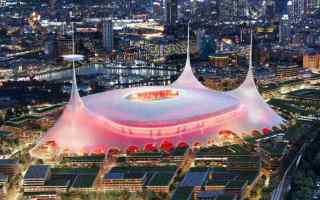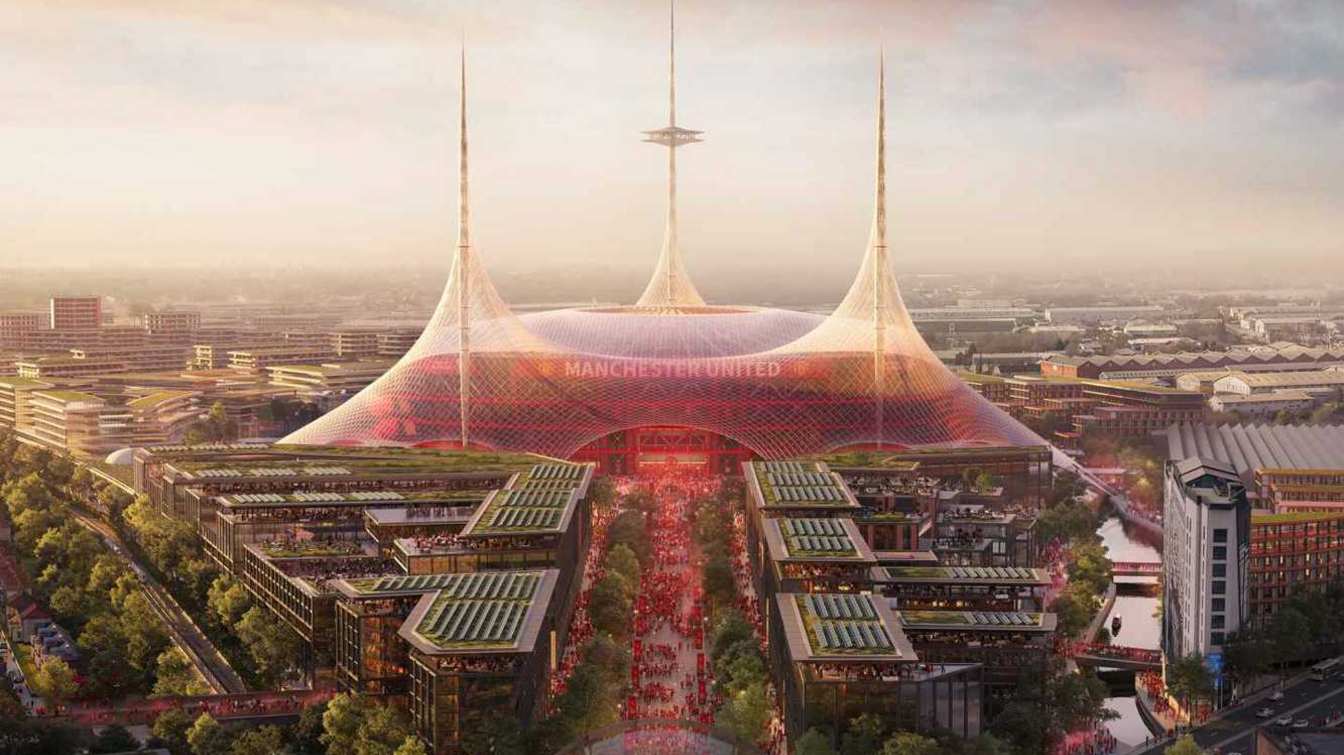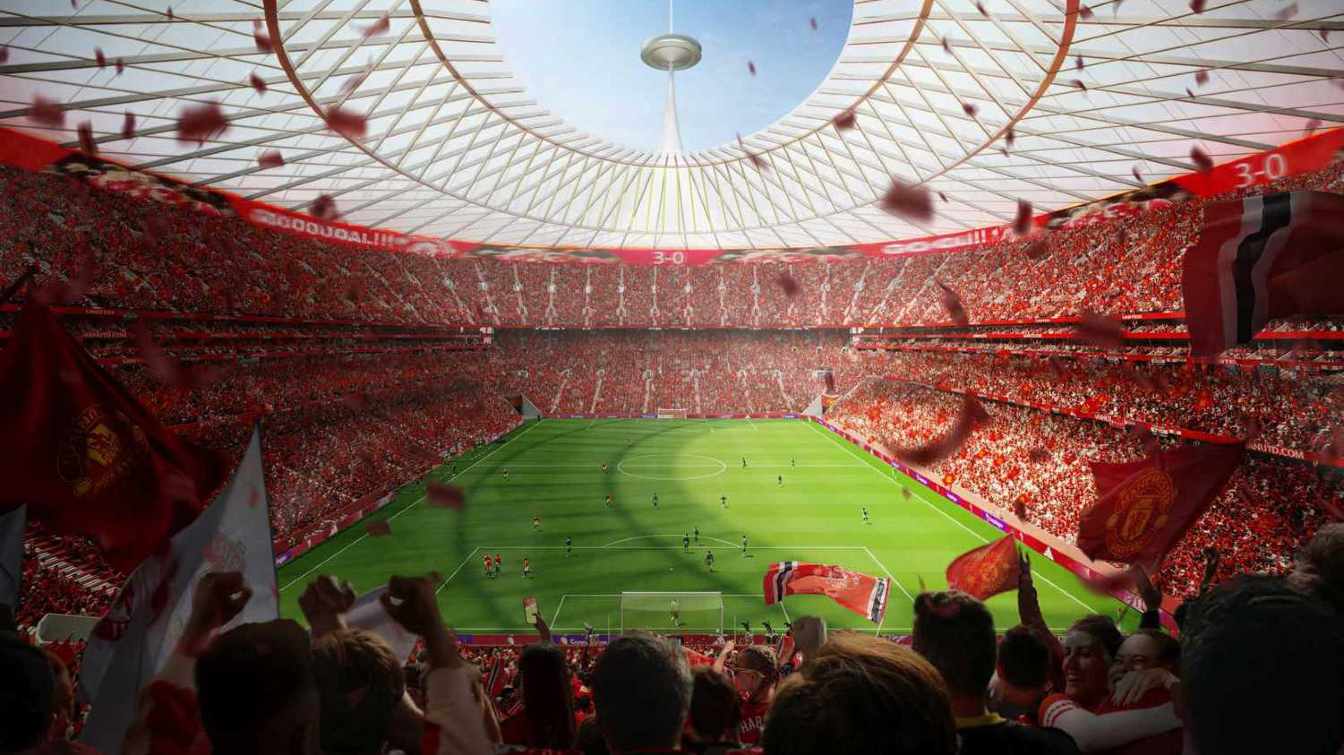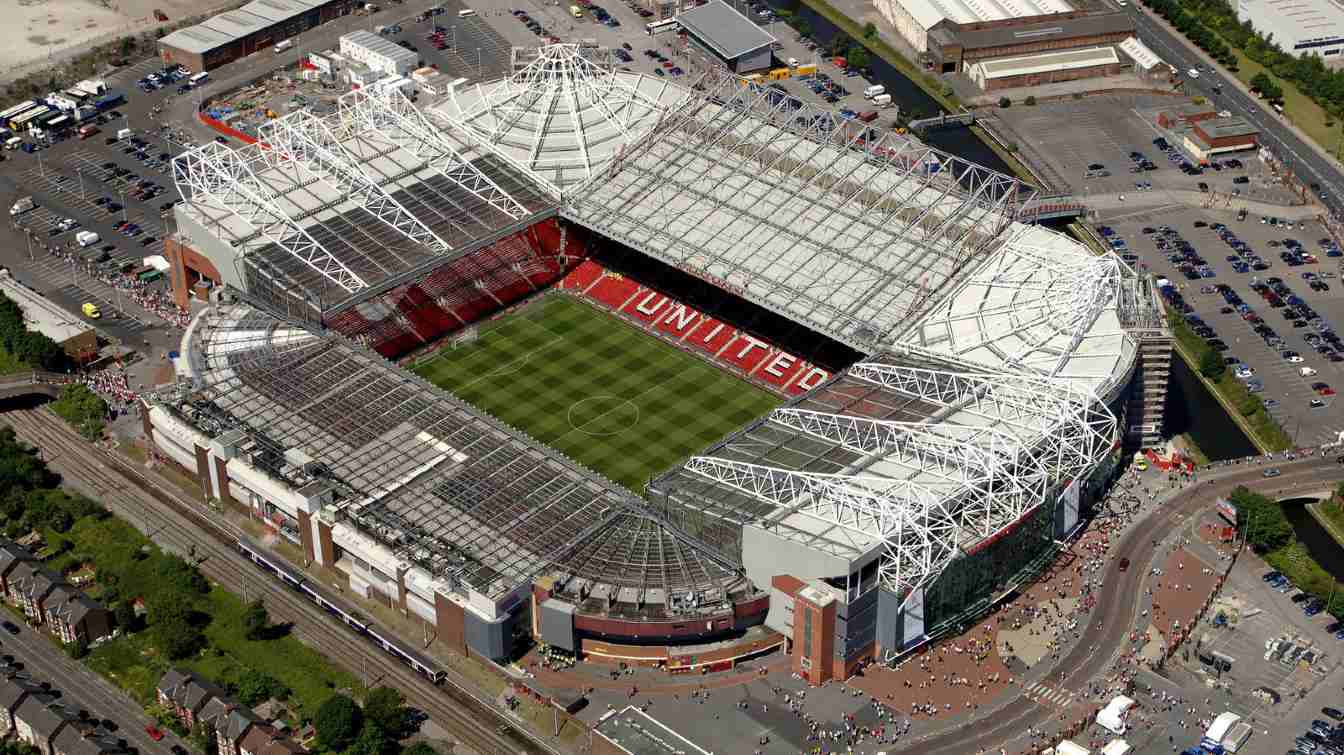England: United may give up towers to fund a stadium and host the World Cup
source: StadiumDB.com; author: Paulina Skóra
 Manchester United’s new co-owner, Sir Jim Ratcliffe, has announced an ambitious plan to build the largest and most profitable football stadium in the world. However, the project is expected to cost around £2 billion. At the same time, Manchester is presented with a chance to host a major tournament.
Manchester United’s new co-owner, Sir Jim Ratcliffe, has announced an ambitious plan to build the largest and most profitable football stadium in the world. However, the project is expected to cost around £2 billion. At the same time, Manchester is presented with a chance to host a major tournament.
Advertisement
Where to find funding?
Although Ratcliffe's fortune is estimated at over £23 billion, he is unlikely to cover the full cost from his own pocket. The Glazers, likewise, are not known for investing in the club for reasons other than financial. A full sale of the club is not on the table, but the creation of a subsidiary company to manage the new stadium is possible. Shares in this company could then be sold to external investors — a model previously adopted by FC Porto and FC Barcelona.
An alternative would be a loan, but Manchester United’s current financial situation complicates this option. The club already pays about £36 million annually to service its debt. Further loans, especially on unfavorable terms, could place a serious burden on the balance sheet. At an interest rate of 7.38% — like the one Everton recently secured — interest alone on an additional £2 billion could reach £200 million a year.
A significant potential revenue stream lies in selling naming rights to the new stadium. Experts estimate this could bring in £30–40 million annually, or up to £400 million over a decade. The club’s leadership does not rule out this solution, meaning the legendary name Old Trafford
could soon become history, giving way to a commercial name.
Land in play
Another source of financing could be the sale of part of the land owned by the club. Manchester United possesses about 100 acres around the Old Trafford, which are to be included in a major development project featuring 17,000 apartments, schools, and shops. Selling a portion of this land could generate up to half a billion pounds.
The most realistic scenario includes a combination of all these sources. The club will likely sell naming rights and part of the surrounding land, and then create a special-purpose vehicle (SPV) to handle the construction and operation of the new stadium. This entity will be responsible for all revenues and costs associated with the stadium. It will be the SPV, not the club itself, that takes on any debt, and a minority investor would be repaid from the SPV’s profits. As Ratcliffe himself told the BBC, financing is not a problem.
This indicates a strategy based on strong capital backing and a flexible investment structure.
Less spectacle, more pragmatism
Completing the project within a £2 billion budget may require stepping away from spectacular but costly architectural visions. Norman Foster’s concept included three 200-meter spires, a glass roof harvesting solar energy and rainwater, and a public space twice the size of Trafalgar Square. An impressive concept — but not necessarily cost-effective.
According to Old Trafford Regeneration Task Force documents, constructing a stadium with such a roof would require purchasing additional land from Freightliner, which owns a rail terminal west of the current site. Although the company plans to relocate near St. Helens, it will likely seek a greater share of profits from the Trafford Wharfside project. Dropping the spires and roof could cut construction costs by up to £300 million. The stadium capacity might also be adjusted — instead of the originally planned 90,000 seats, the final design may include slightly fewer. For many architecture firms, the last 10,000 seats are the most expensive, complex to build, and least profitable.
Women’s World Cup coming to the UK?
The proposed new Manchester United stadium could be one of the host venues for the 2035 FIFA Women’s World Cup, as confirmed by Mark Bullingham, CEO of the English Football Association (FA). The UK’s bid is the only one officially accepted by FIFA. President Gianni Infantino confirmed that no other serious
bids have emerged. This means the tournament is almost certain to return to the UK, for the first time since the men’s World Cup in 1966.
During the UEFA Congress in Belgrade, Bullingham stated that United’s new stadium, expected to open in the 2030/31 season, could be among the host venues. We’ll speak to Manchester United and see if they can be part of the tournament,
he said. The expanded format is expected to include 48 teams, requiring 16 venues. The FA chief expressed the willingness of England, Scotland, Wales, and Northern Ireland to cooperate under such a format.
Wembley Stadium would host the final, but the full list of venues has yet to be confirmed. Alongside United’s new stadium, candidates include Villa Park in Birmingham, Racecourse Ground in Wrexham, and Windsor Park in Belfast. The UK Government, led by Prime Minister Keir Starmer, supports the bid and is expected to deliver guarantees regarding tax and security to FIFA by the end of April. The official application will be submitted in November.
Advertisement
 StadiumDB
StadiumDB

